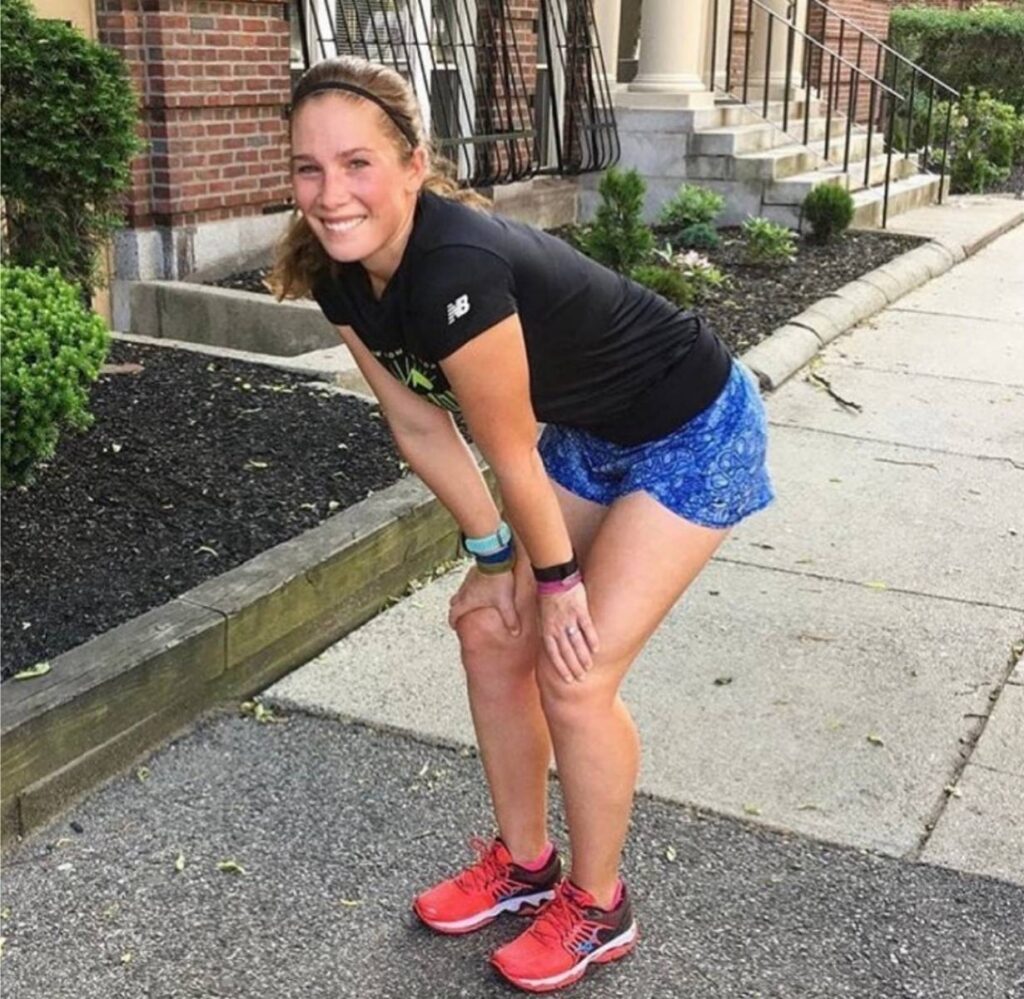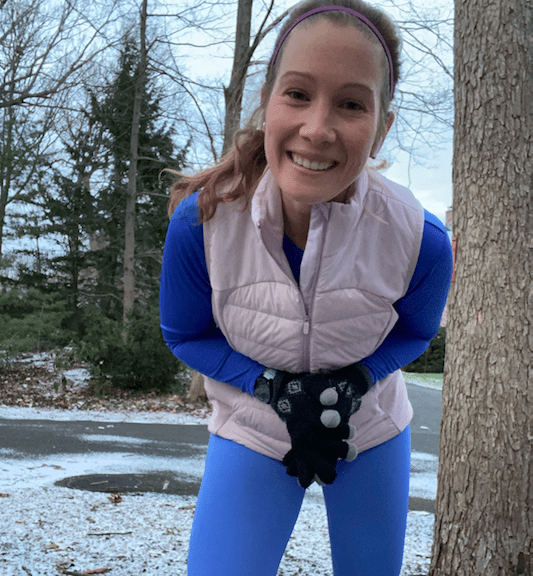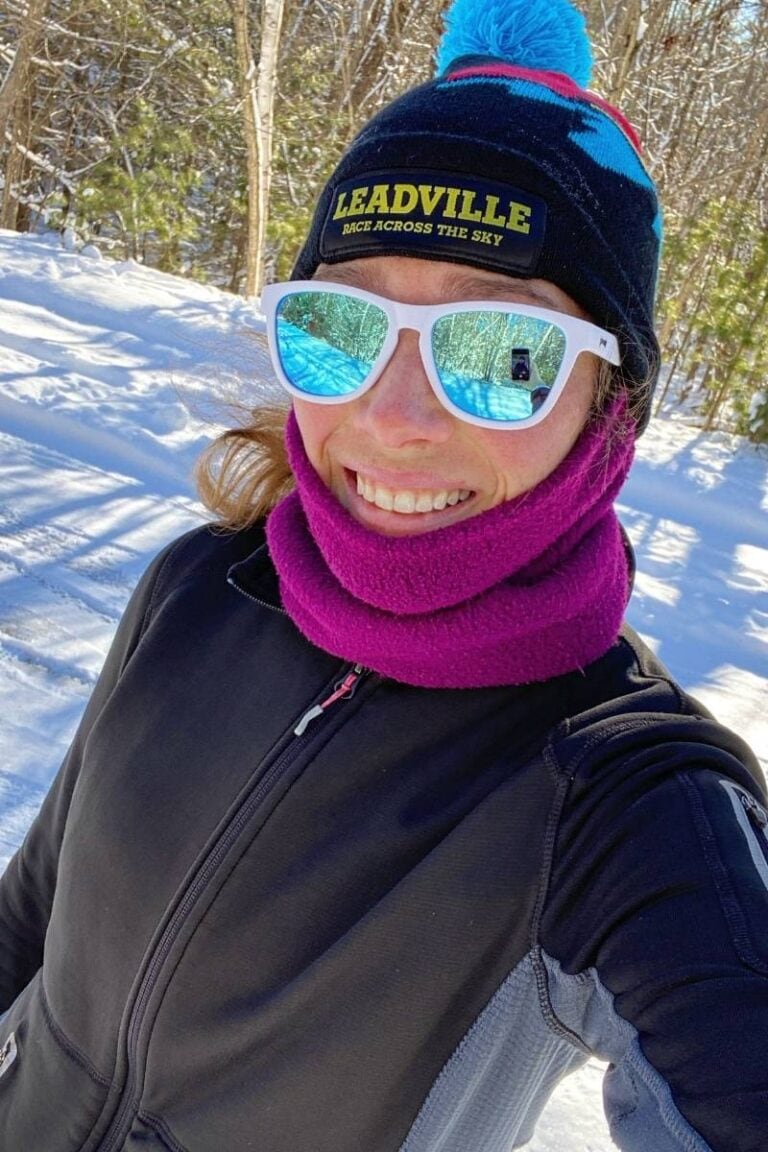Running in the Heat – How to Make it More Bearable (and Fun!)
The weather finally warms up and to celebrate, you head out for a run in the sunshine only to find that you’re overheating and exhausted just a few minutes into it. Paces that were easy in the winter now feel more challenging and running feels flat out hard. Running in the heat is possible (and fun!), yet you need to adjust, modify and adapt so you can stay healthy and continue to train smart. Below I share eleven tips on how to make running in the heat more bearable and enjoyable.
Is Running in the Heat Bad for You?
If you plan ahead and prepare well, running in the heat is not bad for you. Set yourself up for a successful run by being flexible with your approach and modifying – no matter the distance. For instance, hydrate with both water and electrolytes before and after your run, while also carrying fluids with you. I share more about this below!
Is It Harder to Run in Hot Weather?
Yes, running in the hot weather is more difficult. The heat and humidity both put more stress on your body and increase your heart rate faster than in cooler temperatures. This is why modifying and being flexible is so crucial. For example, run workouts off effort as opposed to targeting a specific pace. I suggest doing this for all training runs, even easy runs! Forget your easy pace range from the cooler months and focus in on giving an easy effort.
Should I Run Slower in the Heat?
Everybody’s paces change when the weather warms, so expect to see slightly slower splits on your watch. It doesn’t mean you’re losing fitness or plateauing with your training – this is typical! Run off effort (read more about this tip below) and give your body time to adjust and adapt to warm weather training.
Looking to adjust your paces? Use this temperature calculator as a guide to adjusting your speed for faster workouts. Keep in mind, this is simply a tool. If the effort ever feels like more than you should be exerting, back off a bit and modify.
11 Tips to Make Running in the Heat More Bearable (and Fun!):
Hydrate
No doubt, hydration is important year-round. It’s even more important during the warmer months because you become dehydrated much more quickly.
You lose electrolytes when you sweat, and hotter weather means sweatier runs. Replenish your electrolytes by adding an electrolyte tablet (my favorite is Nuun Sport) into your water before and after your summer training runs, and your water bottle too.
During the cooler months, I typically don’t carry fluids with me unless my run is over 80 minutes, but that changes in the heat. Carry fluids on all your runs, no matter how long! I have both a Nathan Handheld Water Bottle (for short runs) and a Nathan Hydration Vest (for long runs). I bring either with me full of water and electrolytes.
Don’t risk the chance of becoming dehydrated. Feeling nauseous, cramping, and headaches are all signs of dehydration.
Run off effort
Paces that felt easy or more attainable in the cooler months will feel more challenging in the heat. Because of this, modify your approach and aim to hit a certain effort level. For instance, if you have a tempo run, try running at a 6 or 7 effort on a scale of 1-10 instead of trying to hit a certain pace. Know that the pace will be different than what it is in cooler months – and that’s ok! Effort is what counts.
Use this Temperature Calculator to see how the current weather in your area will impact your run. Keep in mind, this is simply a tool. If the effort ever feels like more than you should be exerting, back off a bit and modify.
Run time-based as opposed to distance-based
This tip may help take any pressure you put on yourself regarding paces. Switch the structure of your runs from distance-based to time-based.
For example, let’s say in the cooler months you typically run ~10 min/mile for your easy effort. Instead of heading out to run “4 easy miles” (~40 minutes) during the summer, change the wording to “40 easy minutes” or “45 easy minutes”. This way, you still cover a similar amount of mileage, yet there is less focus on pace.
Plan a shady route
Typically, paths and trails in parks offer more trees for shade than running in a neighborhood or downtown. The shade will help keep you cool and shield your skin from the sun’s rays.
When you do hit a stretch with no shade, remember it’s crucial to protect your eyes. I love these goodr sunglasses. The lenses are polarized and they don’t slip or bounce!
Eat beforehand
Because running will feel harder, it’s important to fuel your body before heading out. Grab a quick, carby snack to ensure that you have some energy for your training. In fact, being well-fueled reduces the likelihood of heat exhaustion and muscle cramps, so eat up!
My favorite pre-run snacks for short runs (<80 minutes) are:
- 2 graham crackers
- 1 slice of toast with nut butter
- Banana
- 1/2 bagel with nut butter
These are easy and quick to digest. If your run is longer (80+ minutes), eat something a bit more substantial. Rise and Run has many simple and delicious pre-run snack options.
Wear light, moisture wicking clothing
Start filling your running wardrobe with all items wicking and breathable, which help keep you dry when sweating. Additionally, stick to light colors because they absorb less heat and keep the body cool. In any weather, it’s best to stay away from cotton clothing. Once cotton is wet, it will stay wet, hold onto heat, and lead to painful chaffing on the skin.
I talk more about moisture wicking clothing in Best Running Gear for Beginner Runners.
Wear sunscreen
Cover every inch of exposed skin! It only takes a few minutes to apply and forgoing sunscreen is not worth the risk of getting melanoma. I apply sunscreen before every run year round, even when it’s cold, cloudy or raining. My favorite sunscreen is Supergoop! PLAY. It’s easy to apply and comes in both SPF 30 and 50.
Run early or later in the evening
The earlier you can head out and beat the heat, the better. And if running early in the morning is not possible, plan to run in the evening. Whenever you run, make sure you tell someone where you’re going and about how long you’ll be.
Utilize a treadmill
If you have access to a treadmill, think of it as a tool in your toolkit; somewhere to run during inclement weather or when you need flexibility to possibly jump off at a moment’s notice. If you’re only able to run during the middle of the day while the sun is beating down or when there’s a heat wave, consider running on the treadmill to stay out of the excessive heat.
Take walking breaks
It is 100% okay to walk. No matter what workout you’re doing, the focus is on effort, and if that means walking for a minute or two to keep the effort easy overall or your heart rate down, do it!
Listen to Your Body
If you start to feel off or sick during your run, stop immediately. Things like muscle cramps, fainting, nausea, headaches, and disorientation can be symptoms for heat exhaustion, heat cramping, and heat strokes. So often, runners are taught to “push through the pain”. However, symptoms like these are very serious and can be life-threatening. Bottom line: don’t mess around and listen to your body.
Recap of How to Make Running in the Heat More Bearable:
- Hydrate
- Run off effort
- Run time-based as opposed to distance-based
- Plan a shady route
- Eat beforehand
- Wear light, moisture wicking clothing
- Wear sunscreen
- Run early or later in the evening
- Utilize a treadmill
- Take walking breaks
- Listen to your body
Eager to become a faster and stronger runner? I would love to help you reach your running goals! Email me at [email protected] or check out my Run Coaching Services page.
Comment Below:
What do you do to help with the heat during summer training?
















